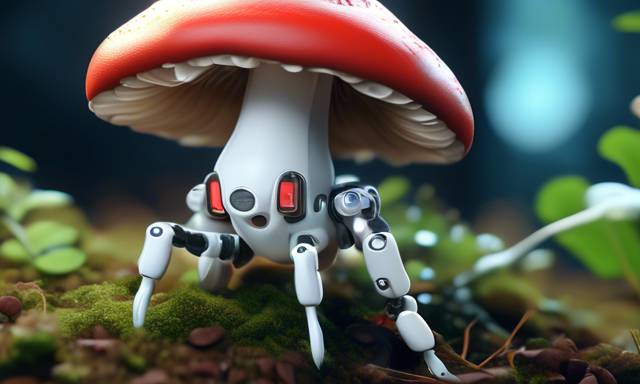🌱 Unveiling the Future of Biohybrid Robotics
The realm of biorobotics is evolving rapidly. Researchers from prestigious institutions, including Cornell University and the University of Florence, have pioneered an innovative breed of biohybrid robots that are energized by the electrical signals emitted by mushroom mycelium. This cutting-edge development demonstrates the exciting possibilities of integrating living organisms into robotic frameworks to significantly enhance their adaptability and responsiveness.
🤖 Insights into the Research
Under the leadership of Anand Mishra, alongside Robert F. Shepherd, a Mechanical Engineering professor, the research team cultivated king oyster mushroom (Pleurotus eryngii) mycelium and seamlessly incorporated it into two innovative robotic prototypes: a soft, arachnid-like bot and a wheeled counterpart. This inventive process not only showcases their engineering skills but also highlights the potential fusion of biological systems with technology.
By leveraging the mycelium’s inherent ability to emit electrical signals, the researchers were able to develop robots capable of sensing and adapting to their environment in ways previously unseen. This marks a significant leap in how robotics can interact with their surroundings, allowing for more nuanced and sophisticated responses.
🔬 Engineering Breakthroughs
Robert F. Shepherd emphasized the uniqueness of their approach: “We engineered artificial hardware capable of operating in real-world conditions while isolating subtle electrical signals originating from living mycelium. These signals are responsive to environmental changes, such as variations in light intensity.” As a demonstration of their findings, lead author Anand Mishra utilized ultraviolet light stimuli to manipulate both a wheeled and a walking robotic design.
Further explaining their endeavors, Shepherd noted that this research has received funding from a CROPPS grant initiated by the National Science Foundation, complemented by support from the Engineered Living Materials Institute at Cornell. The overarching aim of their work revolves around harnessing mycelium’s capabilities for environmental monitoring—particularly soil health diagnostics.
- Mycelium’s natural habitat is within the soil, making it an ideal candidate for soil health assessment.
- By tapping into the mycelium’s signaling pathways, the team aims to identify potential soil issues effectively.
🧪 Challenges and Solutions
One of the primary hurdles the research team encountered involved devising a reliable method for detecting the subtle electrical signals produced by mycelium and translating these into meaningful commands for the robots. Mishra successfully created an electrical interface capable of accurately interpreting the mycelium’s raw electrical activity, processing that data, and converting it into digital signals that activate the robots’ actuators.
🏆 Successful Experiments
The team conducted three distinct experiments with their biohybrid robots, showcasing impressive abilities. The experiments demonstrated that the robots could:
- Walk and roll in sync with the electrical signals from the mycelium.
- Adjust their movement patterns upon exposure to ultraviolet light.
- Override the mycelium’s natural signals when necessary.
These accomplishments highlight the remarkable adaptability and responsiveness that can be achieved with mushroom-powered robotics, suggesting a promising direction for future explorations in robotics and biorobotics.
🔥 Hot Take: The Future Awaits!
For those interested in the intersection of nature and technology, this advance in biohybrid robotics signifies an exciting era where organic and synthetic systems intertwine. The potential applications for these innovations span various fields, including environmental monitoring and perhaps even more complex tasks. Keep an eye on how this develops, as the fusion of biology with technology continues to intrigue and transform traditional robotics.





 By
By



 By
By
 By
By